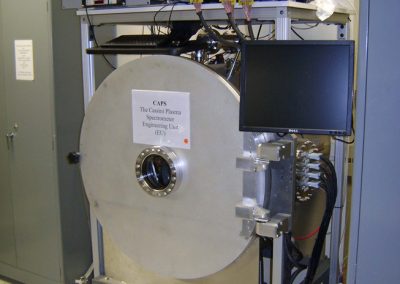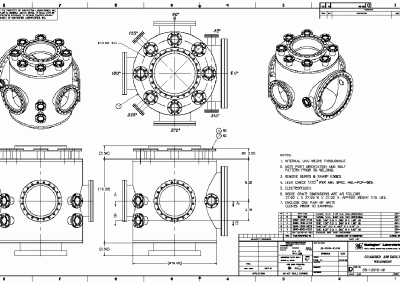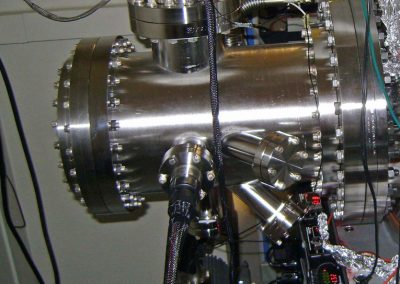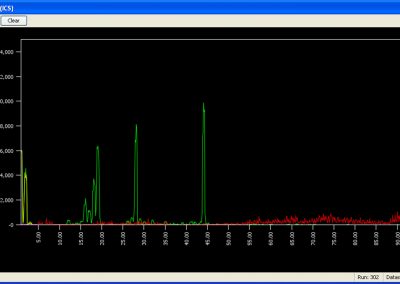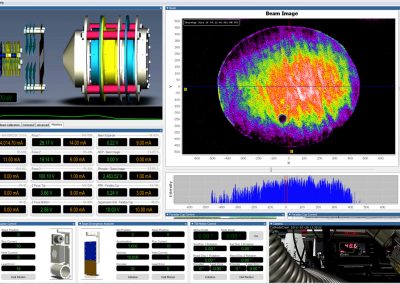Cassini Calibration
A controlled access laboratory for post launch calibration, characterization, and diagnostics of the Cassini Plasma Spectrometer (CAPS) and the Cassini Ion & Neutral Mass Spectrometer (INMS).
Cassini Plasma Spectrometer (CAPS) Chamber
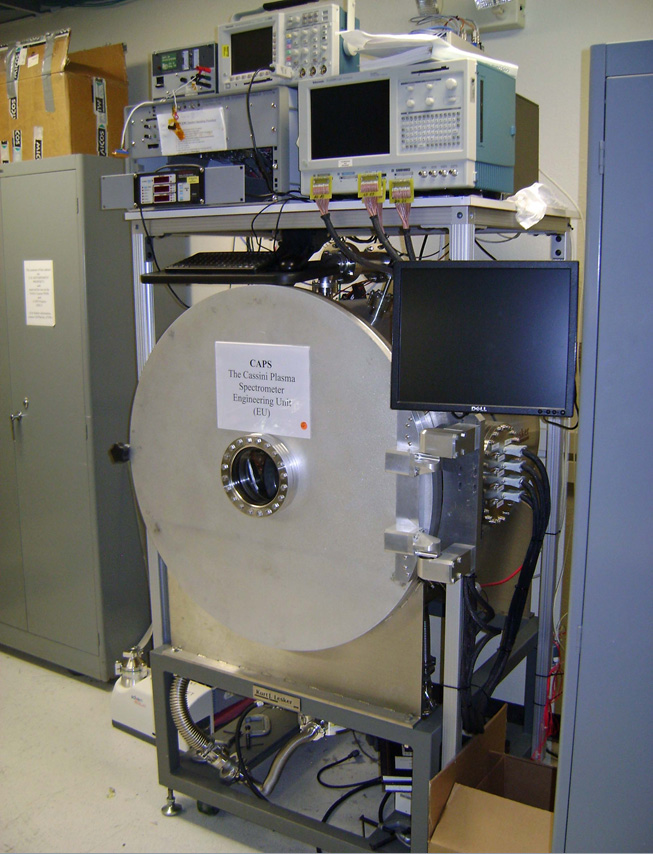
CAPS Chamber Features:
- Chamber door opens greater than 90 degrees.
- Interior tray drawer permits supported extraction of CAPS instrument & insertion of instruments up to approximately 16” x 16” x 16” cube
- Up to three lab benches available for conversion to ESD operations if necessary.
- Main chamber dimensions: 24” diameter x 24” deep cylinder
- System pumping: 450l/s Seiko Seiki magnetically-levitated turbomolecular pump backed by an scroll pump (no oil containing pumps used in the lab)
- Additional bottom flange port for second turbopump or cryopump
- 8” CF viewport
- 10” CF multi-pin instrument electrical feedthrough flange
- Numerous available flanges at an assortment of chamber positions for electrical or vacuum feedthroughs
- High purity nitrogen available for instrument purging
- Chamber vented with high purity nitrogen
- Chamber pressure, temperature, and CAPS instrument conditions monitored remotely
- Routine base pressures of 1 x 10-7 Torr
- Reaches high vacuum (turbo starts) in 10 minutes
- No thermal control
- No TQCM, No RGA
INMS Chamber Features:
- 16” x 16” stainless steel cylindrical chamber
- Three (3) 8” CF ports, two (2) 10” CF port, one (1) 13.25” CF port, and ten (14) 2.75” CF ports
- Axis of target flange (13.25” CF), all three (3) 8” CF flanges and two (2) 2.75” CF flanges occupy same horizontal plane
- Axis of target flange (13.25” CF), two (2) 10” CF flanges and one (1) 8” CF flanges occupy same vertical plane
- All metal sealed flanges and fittings
- Ceramic insulators and isolation
- NO ELASTOMERS
- Nominal base vacuum level 3 x 10-10 Torr after 200C bakeout
- INMS instrument bakeable to 250C
- Chamber bakeable to 400C, but limited to program, mission, science instrument, ion gun and turbopump temperature considerations
Cassini Ion & Neutral Mass Spectrometer Calibration Chamber
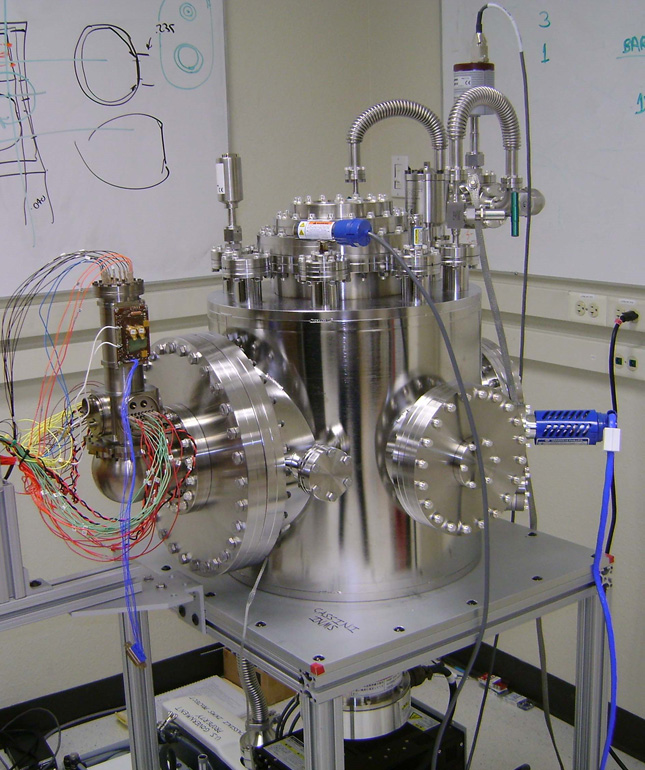
INMS Schematics

INMS Chamber Features (cont):
- INMS gimbal motion control (+/- 10 degrees in any plane)
- Scriptable movement, ion gun and instrument control
- Instruments or detectors up to 13.25” CF size
- Automated chamber parameter control, monitoring and recording
- Hardware and software overpressure failsafe protection mechanisms for system and mission critical flight hardware
- PC-controlled HV power supplies for up to 30 ion lens elements
- Four (4) automated filament emission regulator power supplies for operating up to four (4) ionization sources
- Flight-qualified RF power supply for quadrupole rod operation
- Two (2) Granville-Phillips Stabil-Ion® gauges for pressure measurement and vacuum interlock operation from 1×10-4 to 1×10-10 Torr range
- MKS spinning rotor gauge transfer standard for precise NIST-traceable pressure measurements from 1×10-2 to 1×10-7 Torr operation
- Two (2) Granville-Phillips Convectron® gauge for turbopump foreline monitoring and main chamber during venting and initial evacuation
- Pfeiffer PrismaPlus quadrupole mass spectrometer (QMS) residual gas analyzer (RGS)
- No TQCM
- No clean room or tent
- < 1 hour to reach 1×10-6 Torr, 3×10-10 Torr typical after bakeout
Ion Source
- Nominally supplies 5 ion species H+, Ar+, Ne+, He+, N+ and ion species relevant to Cassini mission, but other species possible
- Ion energies from 1 keV down to < 10 eV
- MCP imaging detection system
- Faraday cup detection and beam monitoring system
- Ion optics for beam spreading at target
- Internal ion apertures for beam diagnostics and focusing
- SwRI-developed custom ion source
- Drift tubes for conducting ions to target at low eV
- Ion source-to-target distance: ~30”
Cassin INMS Calibration System Ion Gun

Sample INMS mass scan
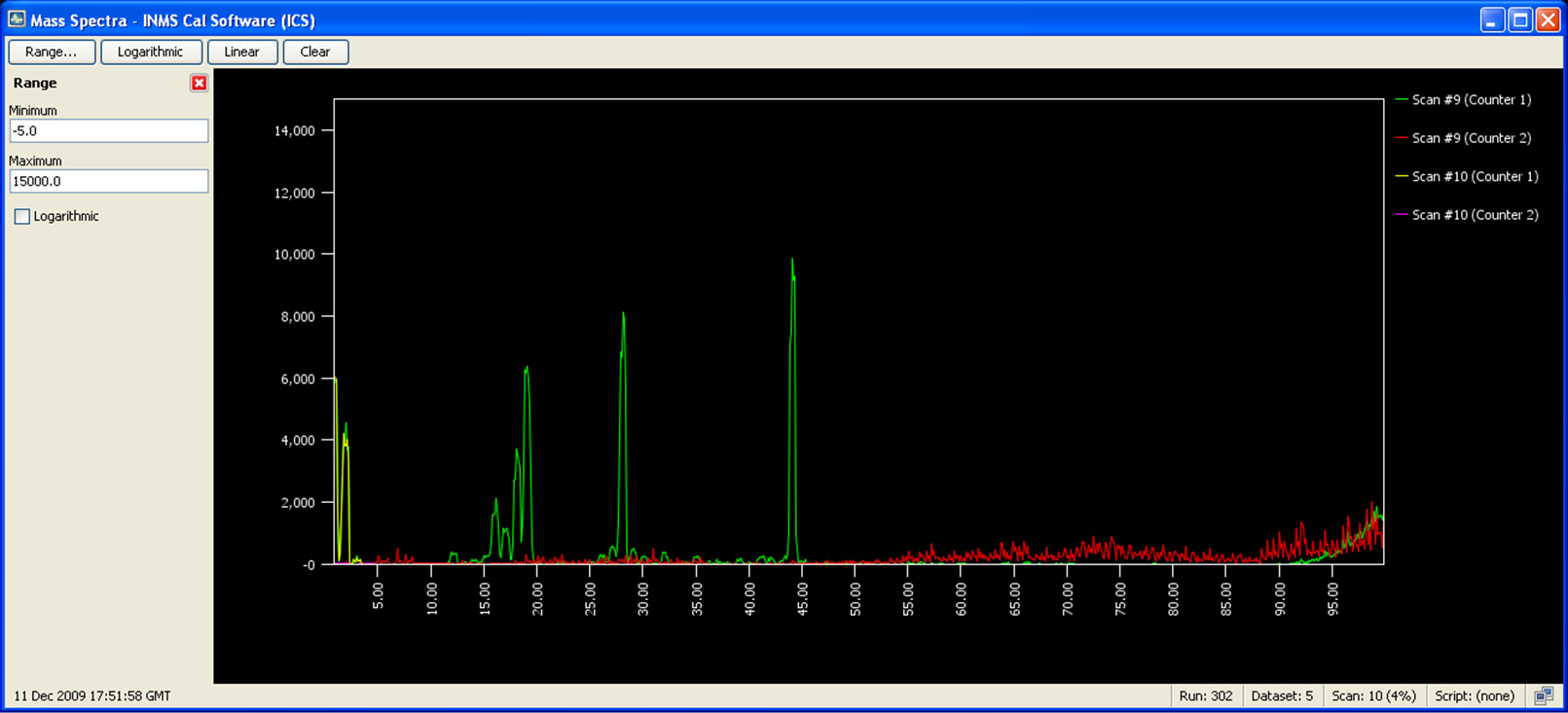
Graphical User Interface (GUI) for ion gun operation

Materials prohibited in both ion gun and main chamber: nylon, silicone, PVC, low molecular weight hydrocarbons, zinc, cadmium, brass, particulate contaminated or producing items/mechanisms (blacklight inspection prior to chamber entry preferred).

